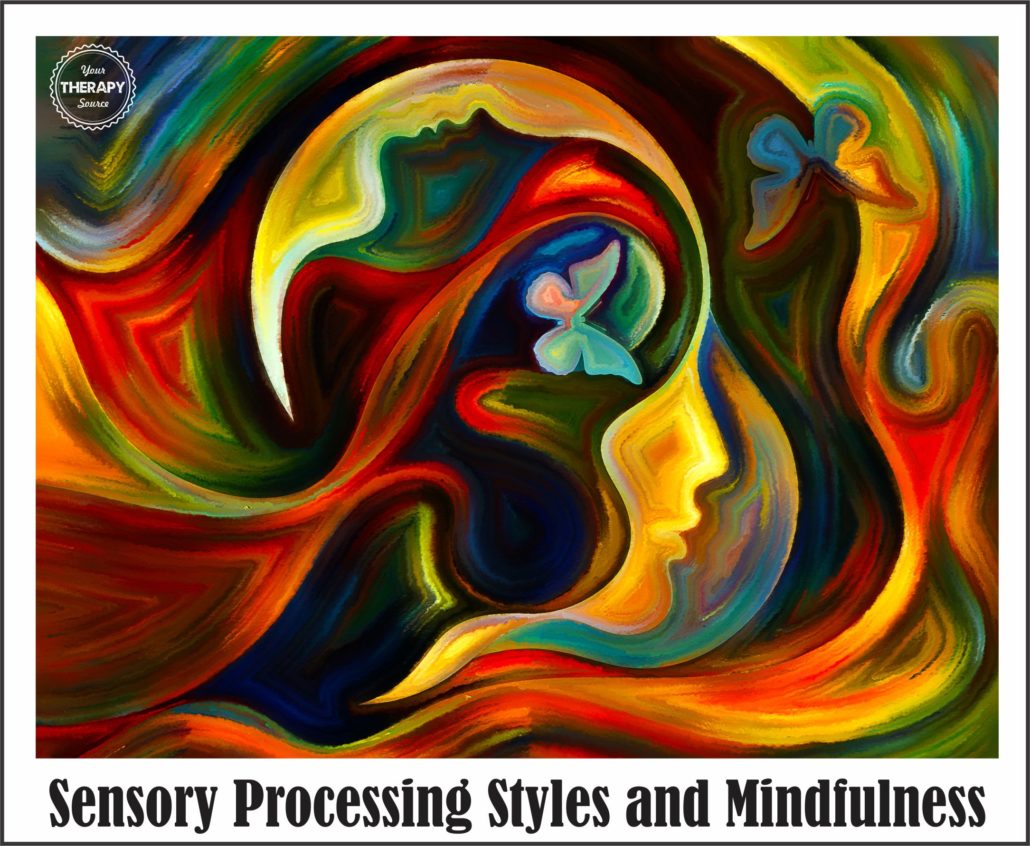Sensory Processing Styles and Mindfulness
Mindfulness is the ability to live in the moment with an open mind and attention to the present. In order to live in the moment, one must be able to bring attention and awareness to all of the sensory, cognitive, and emotional aspects of the current experience. Focused breathing, meditation and yoga are a few examples of how one can practice mindfulness. Researchers took a closer look at the association between sensory processing and mindfulness.
Being mindful throughout the day encourages us to express our appreciation for even simple activities throughout the day. This could include mindful eating, recognizing a grateful moment, smelling different scents, or a body scan.
All of these skills can be explicitly taught and practiced to help to decrease frustrations and encourage us to appreciate the small things of everyday life.
What Does the Research Say on Sensory Processing and Mindfulness?
The British Journal of Occupational Therapy published research examining the relationship between mindfulness and sensory processing styles.
Since mindfulness involves paying attention to the sensory components of daily tasks and experiences, it would be expected to vary across sensory processing styles.
For example, sensory styles characterized by reduced awareness of sensory inputs would be expected to be associated with less mindfulness during everyday sensory experiences.
The study included 151 healthy individuals ranging in age from 18-60. Each participant completed the Mindful Attention Awareness Scale (MAAS), Cognitive and Affective Mindfulness Scale – Revised (CAMS-R) and the Adolescent/Adult Sensory Profile (AASP).
Results of the Study
The results indicated the following:
- low registration sensory processing style was negatively correlated with both measures of mindfulness.
- sensory sensitivity and sensory avoiding processing styles were also negatively correlated with mindfulness, but only in the frequency of mind wandering episodes.
- sensory seeking style did not significantly correlate with either mindfulness measure.
- increased low registration, sensory sensitivity and sensory avoiding scores significantly predicted mind wandering and distraction.
In summary, “aspects of mindfulness associated with attention and awareness were significantly negatively related to sensory processing patterns associated with passive behavioral strategies (low registration and sensory sensitivity)”.
Reference: Karen R Hebert. The association between sensory processing styles and mindfulness. British Journal of Occupational Therapy 0308022616656872, first published on July 18, 2016 doi:10.1177/0308022616656872
Resources to Help with Mindfulness Training
Created by certified yoga instructor and former primary school teacher, Giselle Shardlow, Mindful Kids in 10 Minutes a Day: PreK-2nd Grade can help you easily bring mindfulness to children (including during sensory play) in preschool through 2nd grade!
The Mindful Kids in 10 Minutes a Day – PreK to 2nd Grade will provide you with daily activities to help kids find quietude, calm, and focus in the midst of their otherwise-busy day.
Kids need yoga and mindfulness now more than ever! If you are a busy teacher, therapist, or parent and are looking to dedicate time to yoga and mindfulness by adding in quick bouts of 10 minute yoga for kids in your classroom, check out CLASSROOM YOGA IN 10 MINUTES A DAY! Great for brain breaks!
This Mindfulness Middle School done-for-you workbook will provide you with daily activities to help middle schoolers find quietude, calm, and focus in the midst of their otherwise-busy day. Watch their gratitude grow! MINDFULNESS MADE EASY FOR MIDDLE SCHOOLERS!
This download is a collection of 30 full sized yoga cards (8.5″ x 11″). It includes directions, Sun Salutation sequence and over 20 game ideas with small size yoga cards (4″ x 5″). They are reproducible for the clients on your caseload or students in your classroom. Send them home for carry over activities. FIND OUT MORE INFORMATION ON YOGA CARDS.



